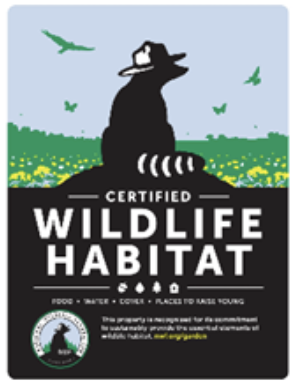Originally published in The Garden Path, Spring 2023. If you would like to get The Garden Path, we invite you to JOIN US as a member.
 BRASH by Hal Mann, Wild Ones
BRASH by Hal Mann, Wild Ones
There’s a growing awareness of how important native plants are not only for wildlife but for us humans as well. Consequently many are wondering how to incorporate these plants into their home landscapes without causing some eyebrow-raising skepticism by their neighbors.
You can actually garden with native plants the same way as non-natives. You can go anywhere from extremely formal, highly maintained plantings, to wild, almost unmanaged landscapes. However, when trying to fit into a neighborhood, it's a good idea to consider the BRASH approach. This acronym coined by Bret Rappaport, an attorney and early President of Wild Ones, gives us a system to consider. (Wild Ones is a national not-for-profit conservation organization with local chapters that teach the many benefits of growing wildflowers and other native plants in your yard. As of this writing, there are over 8,000 members in 76 chapters located in 29 states.)
Borders tell viewers the planting is purposeful, providing a sense of order. This can simply be a sharp cut edge separating the garden from the lawn, or something more elaborate like a stone wall.
Recognize the rights of others. While we have a right to the kinds of flowers and plants we want in our yards, our neighbors have a right to grass and other plants they want on their properties. Being respectful goes a lot further than causing conflict and animosity. After all, we’d rather convert them to the benefits of natural landscaping than have them look with distaste at our ecological landscaping.
Advertise what you’re doing. A small sign can help explain the garden is helping to save and clean water, eliminate the need for poisonous chemicals, giving pollinators what they need to thrive, and make a habitat for butterflies and birds. There are many durable signs available for this purpose.
Start small. As enthusiastic as you might be to going “all-in,” considering developing an overall plan but implementing it in stages. This gives you a chance to learn more about the plants and start to experience the life that your planting attracts. By implementing this in small bites you’ll also be giving your neighbors time to become appreciative of your efforts.
Humanize your garden. We tend to think of us being here, and nature over there. However, in fact, we are a part of nature. In putting some human elements in our gardens, we’re telling our neighbors and the rest of the world, we’ve made this garden on purpose. Structures like a birdbath, birdhouse, trellis, or bench, will let others know we’ve designed this landscape and put part of our personalities in it. You can read a little more about BRASH along with some other interesting natural landscaping articles in this early Wild Ones Handbook. https://archive.epa.gov/greenacres/web/pdf/wo_2004b.pdf.
